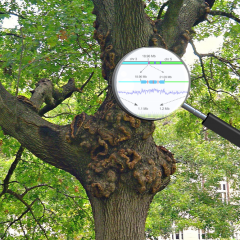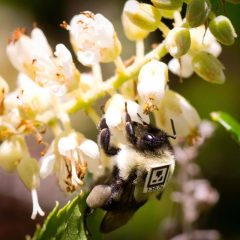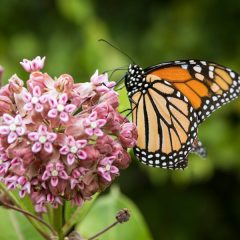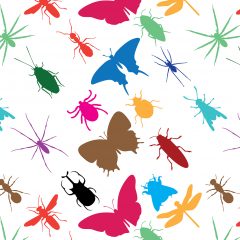Two years ago in 2017, scientists with the USGS and the University of Iowa first reported that neonicotinoid insecticides were “persistent” in drinking water samples collected at the University’s Iowa City campus during a seven week period after the corn planting season (May-July). The reason why was no mystery — at least 80% of the GMO […]
Read More, References, Comment »
A duo of research scientists from Australian universities have conducted an extensive review of global data on insect populations, with stark results. Their analysis of 73 historical reports was published this month in the journal Biological Conservation. It reveals “dramatic rates of decline that may lead to the extinction of 40% of the world’s insect species over the […]
Read More, References, Comment »
Phosphorous is a key nutrient promoting plant growth, and a standard ingredient in many fertilizer blends. But if too much phosphorous ends up in the region’s watershed, it can wreck havoc on wetlands, streams, and lakes, causing harmful algae blooms (like the extreme cyanobacteria algae blooms in Lake Erie last year) and depletion of dissolved […]
Read More, References, Comment »
A team of epidemiologists studied the impact of occupational exposures to organic solvents, metals, and pesticides among 7,404 Hispanic/Latino workers in four major urban areas, and reported a surprisingly high Odds Ratio of 2.18 (confidence interval of 1.34 to 3.55) for some form of cardiovascular disease, or CVD. For atrial fibrillation (a-fib), one of the […]
Read More, References, Comment »
A research team led by scientists with the Salk Institute for Biological Studies in California have applied the latest gene sequencing and mapping technology to take a closer look at the unintended consequences of the method most commonly used to create genetically engineered plants, including today’s herbicide-resistant varieties of corn, soybeans, sugarbeets, and cotton, as […]
Read More, References, Comment »
We know that neonicotinoid insecticides are no-good for bees and other pollinators, even at very low levels of exposure. We know the major neonic — imidacloprid (Admire®) — is the single most acutely toxic pesticide to bees ever discovered, narrowly edging out the former #1 methyl parathion. But scientists are still trying to figure just […]
Read More, References, Comment »
A dark new climate report was released on Black Friday, a day usually reserved for the kind of news someone wants overlooked. The Fourth National Climate Assessment was produced by 13 federal agencies including the Department of the Interior, EPA, NOAA, and the Department of Commerce. Together with experts from non-governmental science institutions, they make up […]
Read More, References, Comment »
Troubling and significant declines in monarch butterfly populations in Florida have occured over the last 30+years, according to a research team from the McGuire Center for Lepidoptera and Biodiversity, part of the Florida Museum of Natural History. A paper by the FLA team was published this summer in the Journal of Natural History, and reports […]
Read More, References, Comment »
The results are in on one of the first, large-scale studies on organic food consumption and cancer risks and they are significant and encouraging. It is widely recognized we need to do much more in preventing cancer, as opposed to treating it, and this study suggests that organic food may be an important piece of […]
Read More, References, Comment »
In the latest study revealing the extent of declines in global insect populations, researchers working in Puerto Rico’s Luquillo rainforest have documented a “bottom-up trophic cascade” triggered by large declines in the biomass and abundance of arthropods, the family of animals that include insects and spiders. Populations of insectivorous predators like lizards, frogs, and birds […]
Read More, References, Comment »










